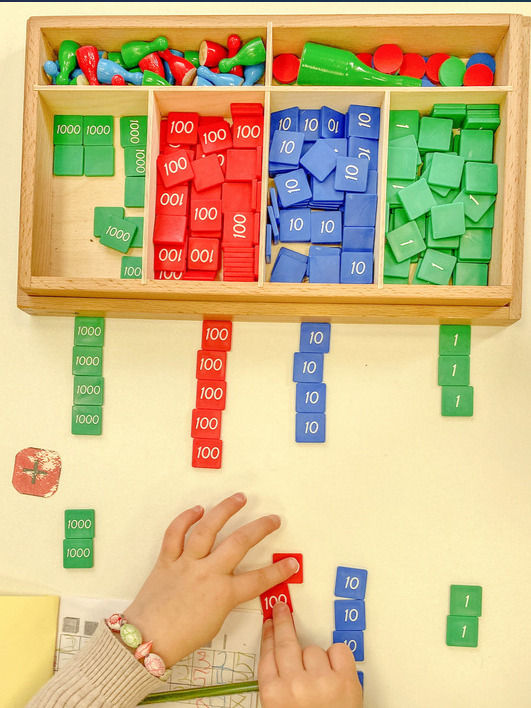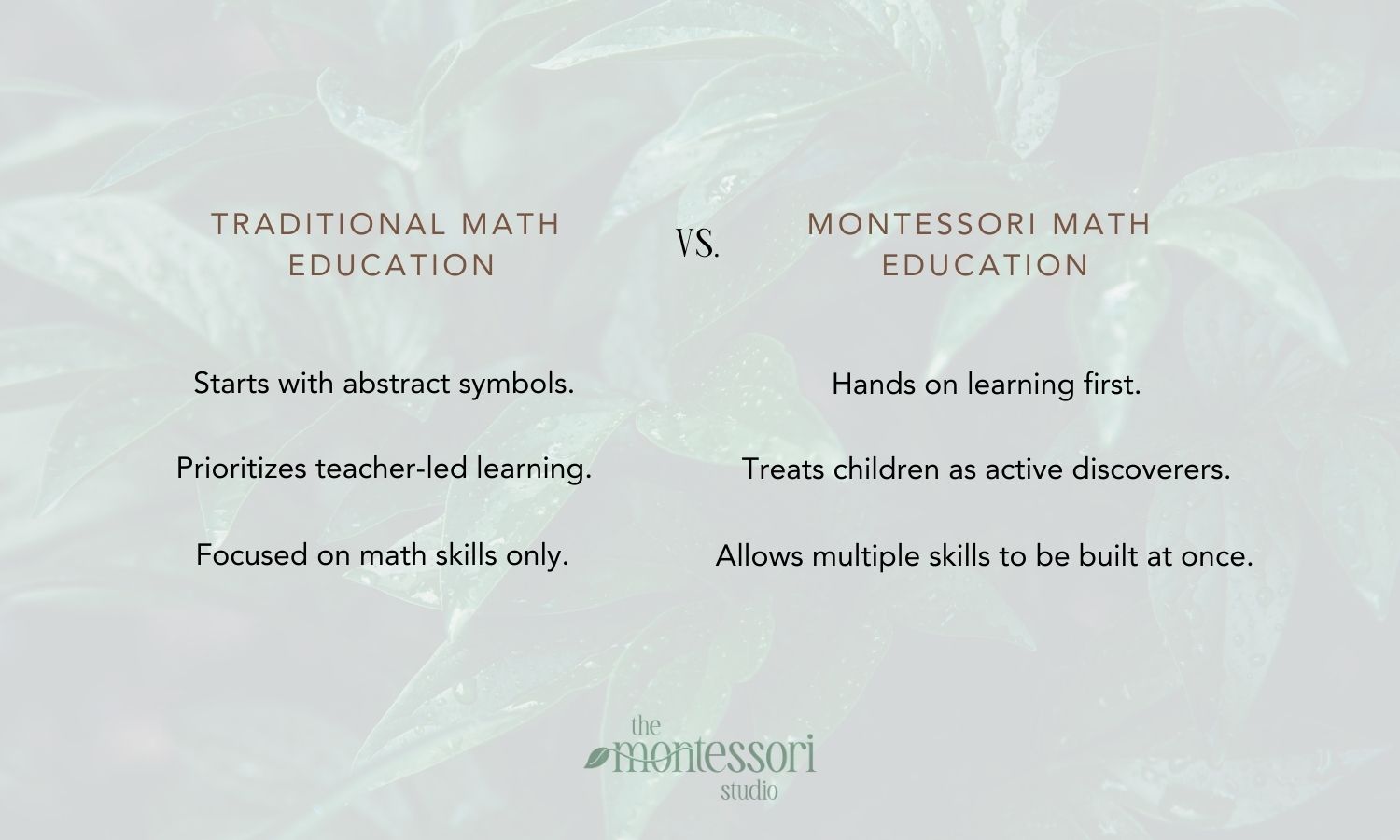
As parents, we want our children to develop confidence in math. Many of us remember our own struggles with math or have watched our children become frustrated with concepts that don’t seem connected to everyday life.
At The Montessori Studio, we firmly believe that the way math is introduced makes all the difference. This guide explains the key differences between Montessori and traditional approaches to math education in straightforward terms, helping you make informed choices about your child’s learning journey.
In Montessori classrooms, children learn math by touching, moving, and exploring specially designed materials before they ever work with numbers on paper. Think of it like learning to ride a bike—you wouldn’t start by reading about it; you’d get on and feel the experience.
For example, instead of memorizing that “5 + 3 = 8,” a child might work with beautiful wooden beads, physically combining 5 beads with 3 beads and discovering that they now have 8. This creates a deeper understanding that stays with them.
Rather than sitting and listening to a teacher explain math concepts, Montessori children:
When children say “I did it myself!” their confidence grows, and they’re more likely to tackle challenging concepts with enthusiasm rather than anxiety.
When a child works with Montessori math materials, they’re not just learning numbers. They’re also developing:

Traditional math education often begins with numbers on paper or screens. Children are asked to understand symbols (like “7” or “+”) before they’ve had enough concrete experiences with what these symbols represent.
This can be like learning to read music notes without ever hearing the sounds they make—confusing and disconnected from real life.
In conventional classrooms, math typically follows a set schedule:
While this works for some children, others need more time or different approaches to truly understand math concepts.
Traditional approaches often emphasize:
You don’t need a complete Montessori classroom to incorporate these powerful principles. Here are simple ways to start:
Whether your child attends a Montessori school, a traditional school, or learns at home, the principles of hands-on learning and discovery can transform their relationship with mathematics.
By providing concrete experiences before abstract concepts, following your child’s natural curiosity, and making math meaningful in everyday life, you can help nurture a lifelong love of mathematical thinking.
Copyright © 2024-2025 The Montessori Studio | Site Crafted by Felicity Creative